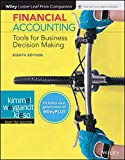
(a)
Financial Ratios: Financial ratios are the metrics used to evaluate the liquidity, capabilities, profitability, and overall performance of a company.
To compute:
(a)
Explanation of Solution
Given info:
Current ratio for 2017
Current ratio for 2016
Current Ratio: Current ratio is used to determine the relationship between current assets and current liabilities. The ideal current ratio is 2:1.
Formula:
Corporation N’s current ratio is 1.70:1 in the year 2017 and1.66:1 in the year 2016. Thus, the current ratio of Corporation N has increased in the year2017.
(b)
To compute: Inventory turnover ratio for 2017 and 2016
(b)
Explanation of Solution
Given info: Balance sheet and Income statement
Inventory Turnover Ratio for 2017
Inventory Turnover Ratio for 2016
Inventory turnover ratio is used to determine the number of times inventory used or sold during the particular accounting period.
Formula:
Average inventory for 2017 and 2016 is determined as follows:
Average inventory for 2017
Average inventory for 2016
Note: Inventory on 12/31/15 was $340 (Opening inventory)
Corporation N’s inventory turnover ratio for 2017 is 2.28 times and for 2016 is 2.44 times. The ratio has decreased when compared to 2016.
(c)
To compute: Profit margin ratio for 2017 and 2016
(c)
Explanation of Solution
Given info: Balance sheet and Income statement
Profit margin ratio for 2017
Profit margin ratio for 2016
Profit margin ratio is used to determine the percentage of net income that is being generated per dollar of revenue or sales.
Formula:
Hence, profit margin ratio for 2016 and 2017 is 3.82% and 6.63% respectively. This ratio has increased because net income is increased.
(d)
To compute: Return on assets ratio for 2017 and 2016
(d)
Explanation of Solution
Given info: Balance sheet and Income statement
Return on assets ratio for 2017
Return on assets ratio for 2016
Return on assets determines the particular company’s overall earning power.
Formula:
Average total assets are determined by dividing opening and closing total assets by 2. It is calculated as follows:
Average assets for 2017
Average assets for 2016
Note: Assets 12/31/15 was $1,900 (Opening balance)
Hence,
(e)
To compute: Return on common
(e)
Explanation of Solution
Given info: Balance sheet and Income statement
Return on common stockholders’ equity for 2017
Return on common stockholders’ equity for 2016
Rate of return on stockholders’ equity is used to determine the relationship between the net income and the average common equity that are invested in the company.
Formula:
Average common stockholders’ equity is determined by dividing opening and closing total common stockholders’ equity by 2. It is calculated as follows:
Average common stockholder’s equity for 2017
Average common stockholder’s equity for 2016
Note: Equity on 12/31/15 was $900 (Opening balance)
Hence, rate of return on stockholders’ equity for 2017 and 2016 is 24.23% and 13.61% respectively.
(f)
To compute: Debt to total assets ratio for 2017 and 2016
(f)
Explanation of Solution
Given info: Balance sheet and Income statement
Debt to total asset ratio for 2017
Debt to total asset ratio for 2017
Debt to asset ratio is used by the company to determine how well the company is able to survive the losses without damaging the creditors’ interest. It is determined by dividing total debt and total assets.
Formula:
Total debt is determined by adding total current liabilities and total long-term liabilities.
Total debt for 2017
Total debt for 2016
Hence, debt to total assets for 2017 and 2016 is 52.99% and 52.94% respectively. This ratio indicates that the amount of total percentage of assets of Corporation M was provided by creditors.
(g)
To compute: Times interest earned ratio for 2017 and 2016
(g)
Explanation of Solution
Given info: Balance sheet and income statement
Times interest earned ratio for 2017
Times interest earned ratio for 2016
Times - interest earned ratio quantifies the number of times the earnings before interest and taxes can pay the interest expense.
Formula:
Income before income tax and interest expense is the sum of net income, interest expense, and income tax expense. For 2017 and 2016, income before income tax and interest expense is calculated as below:
Income before income tax and interest expense for 2017
Income before income tax and interest expense for 2016
Hence, times interest earned ratio for 2017 and 2016 is 43 times and 12 times respectively. Company’s ability towards payment of interest has increased in the year 2017.
Want to see more full solutions like this?
Chapter 13 Solutions
Financial Accounting: Tools for Business Decision Making, 8e WileyPLUS (next generation) + Loose-leaf
- I need help with this general accounting question using standard accounting techniques.arrow_forwardI am searching for the correct answer to this general accounting problem with proper accounting rules.arrow_forwardThe following direct labor information applies to Summit Tech Co. for the month of April: • Actual labor rate = $12.50 per hour • Actual hours worked = 12,000 hours • • Standard labor rate = $12.00 per hour Standard hours allowed = 11,200 hours Calculate the following: 1. Labor rate variance 2. Labor efficiency variance 3. Total labor variancearrow_forward
- I am searching for the correct answer to this general accounting problem with proper accounting rules.arrow_forwardI am looking for the correct answer to this financial accounting problem using valid accounting standardsarrow_forwardCan you help me find the accurate solution to this financial accounting problem using valid principles?arrow_forward
 Cornerstones of Financial AccountingAccountingISBN:9781337690881Author:Jay Rich, Jeff JonesPublisher:Cengage Learning
Cornerstones of Financial AccountingAccountingISBN:9781337690881Author:Jay Rich, Jeff JonesPublisher:Cengage Learning Managerial Accounting: The Cornerstone of Busines...AccountingISBN:9781337115773Author:Maryanne M. Mowen, Don R. Hansen, Dan L. HeitgerPublisher:Cengage Learning
Managerial Accounting: The Cornerstone of Busines...AccountingISBN:9781337115773Author:Maryanne M. Mowen, Don R. Hansen, Dan L. HeitgerPublisher:Cengage Learning Financial Accounting: The Impact on Decision Make...AccountingISBN:9781305654174Author:Gary A. Porter, Curtis L. NortonPublisher:Cengage Learning
Financial Accounting: The Impact on Decision Make...AccountingISBN:9781305654174Author:Gary A. Porter, Curtis L. NortonPublisher:Cengage Learning Financial AccountingAccountingISBN:9781305088436Author:Carl Warren, Jim Reeve, Jonathan DuchacPublisher:Cengage Learning
Financial AccountingAccountingISBN:9781305088436Author:Carl Warren, Jim Reeve, Jonathan DuchacPublisher:Cengage Learning



